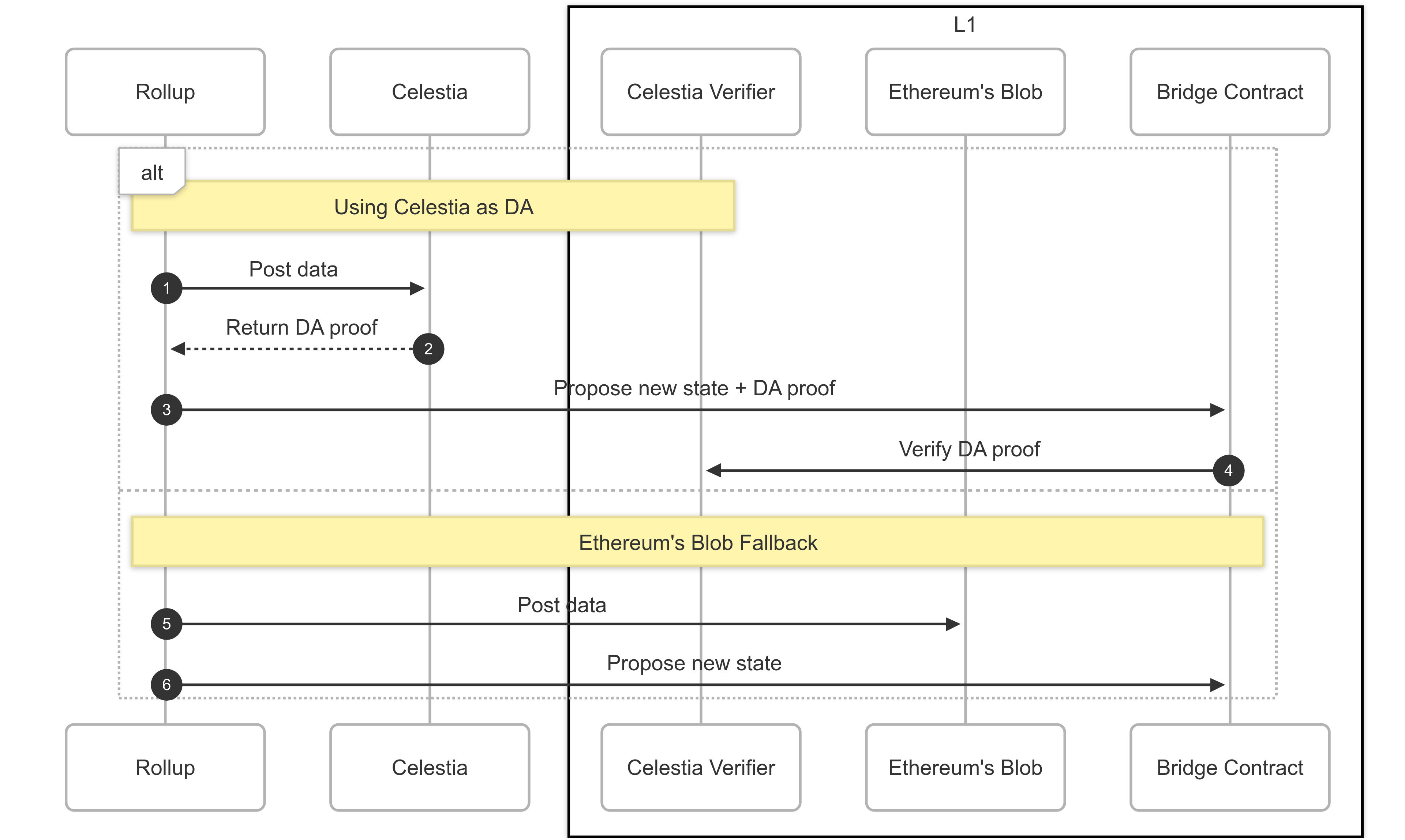Data Availability
Data availability (DA) guarantees that all the necessary information to reconstruct the state of a rollup is available to anyone who needs it. This is crucial for the security of rollups, as it allows anyone to independently verify as well as challenge the validity of transactions and the state of the rollup. Furthermore, DA ensures that users can still access their funds and withdraw from the rollup even if the rollup itself (i.e, the sequencer) goes offline.
Ethereum introduced a new DA layer (blobs) to complement to the old calldata DA in its Dencun hardfork with EIP-4844. Blobs enable cheaper DA costs (compared to calldata) as blobs’ data is transient and will be expired in around 18 days. This in turn helps reduce the overall cost for a rollup. However, the current blob throughput is not so fancy. Given that each blob is ~128KB in size, and each block has a maximum of 6 blobs, translating to a maximum of 64KB/s throughput. For a high-load rollup like RISE, this throughput is insufficient.

Celestia DA
We use Celestia as the main DA layer for our rollup in the normal case. Celestia’s Mainnet currently supports a throughput of 1.33 MB/s (~21x better than Ethereum’s blobs), with the blocktime of 6 seconds. With the clear path to 1GB blocks, Celestia can provide sufficient throughput for RISE to operate upon.
Ethereum’s Blob Fallback
In the event of Celestia unavailability, the rollup can fallback to posting transactions to Ethereum’s blobs. This helps maintain the rollup’s liveness and ensure users’ funds not getting stuck in the rollup’s bridge.
Ethereum fallback is triggered whenever the op-batcher receives an error from Celestia or fails to receive any acknowledgement from Celestia, or in even in the case where the batcher does not have enough funds to pay Celestia transaction fees.
After issues with Celestia have been addressed, the op-batcher will switch back to Celestia as the main DA layer.